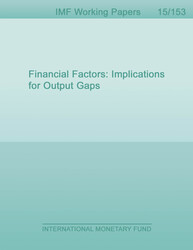
Financial Factors : Implications for Output Gaps
We suggest a new approach for analyzing the role of financial variables and shocks incomputing the output gap. We estimate a two-region DSGE model for the euro area, withfinancial frictions at the household level, between 2000-2013. After joining the monetaryunion, a decline in some countries' borrowing costs contributed to a credit, housing and realboom and bust cycle. We show that financial frictions amplified economic fluctuations andthe measure of the output gap in those countries. On the contrary, in countries such as Franceand Germany, financial frictions played a minor role in output gap measures. We also presentevidence of the trade-offs faced by the European Central Bank when trying to stabilize tworegions in a currency union with unsynchronized economic cycles.
Publication date: July 2015
ISBN: 9781513512860
$18.00
Add to Cart by clicking price of the language and format you'd like to purchase
Available Languages and Formats
| English |
Prices in red indicate formats that are not yet available but are forthcoming.
Topics covered in this book
This title contains information about the following subjects.
Click on a subject if you would like to see other titles with the same subjects.
Economics- Macroeconomics , Economics / General , International - Economics , Monetary Union , Output Gap , Financial Frictions , and Bayesian Estimation
Summary
Copyright © 2010 - 2024
Powered by:
AIDC



